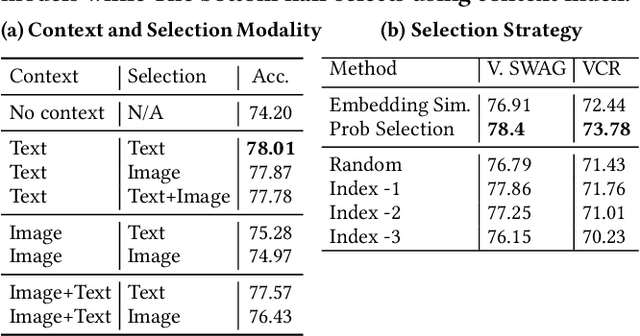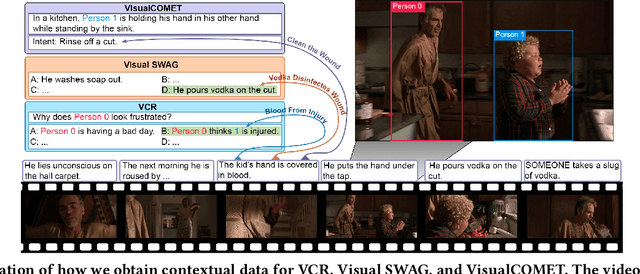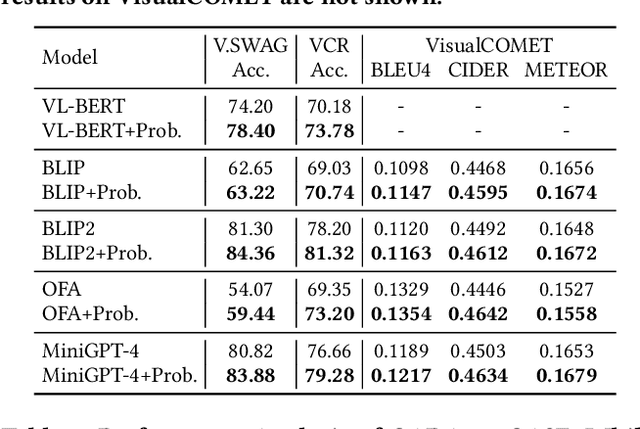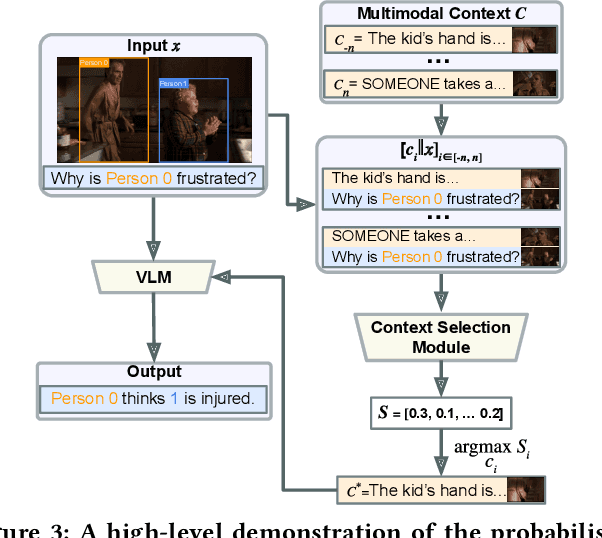Junzhang Liu
ENTER: Event Based Interpretable Reasoning for VideoQA
Jan 24, 2025



Abstract:In this paper, we present ENTER, an interpretable Video Question Answering (VideoQA) system based on event graphs. Event graphs convert videos into graphical representations, where video events form the nodes and event-event relationships (temporal/causal/hierarchical) form the edges. This structured representation offers many benefits: 1) Interpretable VideoQA via generated code that parses event-graph; 2) Incorporation of contextual visual information in the reasoning process (code generation) via event graphs; 3) Robust VideoQA via Hierarchical Iterative Update of the event graphs. Existing interpretable VideoQA systems are often top-down, disregarding low-level visual information in the reasoning plan generation, and are brittle. While bottom-up approaches produce responses from visual data, they lack interpretability. Experimental results on NExT-QA, IntentQA, and EgoSchema demonstrate that not only does our method outperform existing top-down approaches while obtaining competitive performance against bottom-up approaches, but more importantly, offers superior interpretability and explainability in the reasoning process.
PuzzleGPT: Emulating Human Puzzle-Solving Ability for Time and Location Prediction
Jan 24, 2025



Abstract:The task of predicting time and location from images is challenging and requires complex human-like puzzle-solving ability over different clues. In this work, we formalize this ability into core skills and implement them using different modules in an expert pipeline called PuzzleGPT. PuzzleGPT consists of a perceiver to identify visual clues, a reasoner to deduce prediction candidates, a combiner to combinatorially combine information from different clues, a web retriever to get external knowledge if the task can't be solved locally, and a noise filter for robustness. This results in a zero-shot, interpretable, and robust approach that records state-of-the-art performance on two datasets -- TARA and WikiTilo. PuzzleGPT outperforms large VLMs such as BLIP-2, InstructBLIP, LLaVA, and even GPT-4V, as well as automatically generated reasoning pipelines like VisProg, by at least 32% and 38%, respectively. It even rivals or surpasses finetuned models.
ElastiFormer: Learned Redundancy Reduction in Transformer via Self-Distillation
Nov 22, 2024



Abstract:We introduce ElastiFormer, a post-training technique that adapts pretrained Transformer models into an elastic counterpart with variable inference time compute. ElastiFormer introduces small routing modules (as low as .00006% additional trainable parameters) to dynamically selects subsets of network parameters and input tokens to be processed by each layer of the pretrained network in an inputdependent manner. The routing modules are trained using self-distillation losses to minimize the differences between the output of the pretrained-model and their elastic counterparts. As ElastiFormer makes no assumption regarding the modality of the pretrained Transformer model, it can be readily applied to all modalities covering causal language modeling, image modeling as well as visual-language modeling tasks. We show that 20% to 50% compute saving could be achieved for different components of the transformer layer, which could be further reduced by adding very low rank LoRA weights (rank 1) trained via the same distillation objective. Finally, by comparing routing trained on different subsets of ImageNet, we show that ElastiFormer is robust against the training domain.
Detecting Multimodal Situations with Insufficient Context and Abstaining from Baseless Predictions
May 23, 2024



Abstract:Despite the widespread adoption of Vision-Language Understanding (VLU) benchmarks such as VQA v2, OKVQA, A-OKVQA, GQA, VCR, SWAG, and VisualCOMET, our analysis reveals a pervasive issue affecting their integrity: these benchmarks contain samples where answers rely on assumptions unsupported by the provided context. Training models on such data foster biased learning and hallucinations as models tend to make similar unwarranted assumptions. To address this issue, we collect contextual data for each sample whenever available and train a context selection module to facilitate evidence-based model predictions. Strong improvements across multiple benchmarks demonstrate the effectiveness of our approach. Further, we develop a general-purpose Context-AwaRe Abstention (CARA) detector to identify samples lacking sufficient context and enhance model accuracy by abstaining from responding if the required context is absent. CARA exhibits generalization to new benchmarks it wasn't trained on, underscoring its utility for future VLU benchmarks in detecting or cleaning samples with inadequate context. Finally, we curate a Context Ambiguity and Sufficiency Evaluation (CASE) set to benchmark the performance of insufficient context detectors. Overall, our work represents a significant advancement in ensuring that vision-language models generate trustworthy and evidence-based outputs in complex real-world scenarios.
 Add to Chrome
Add to Chrome Add to Firefox
Add to Firefox Add to Edge
Add to Edge